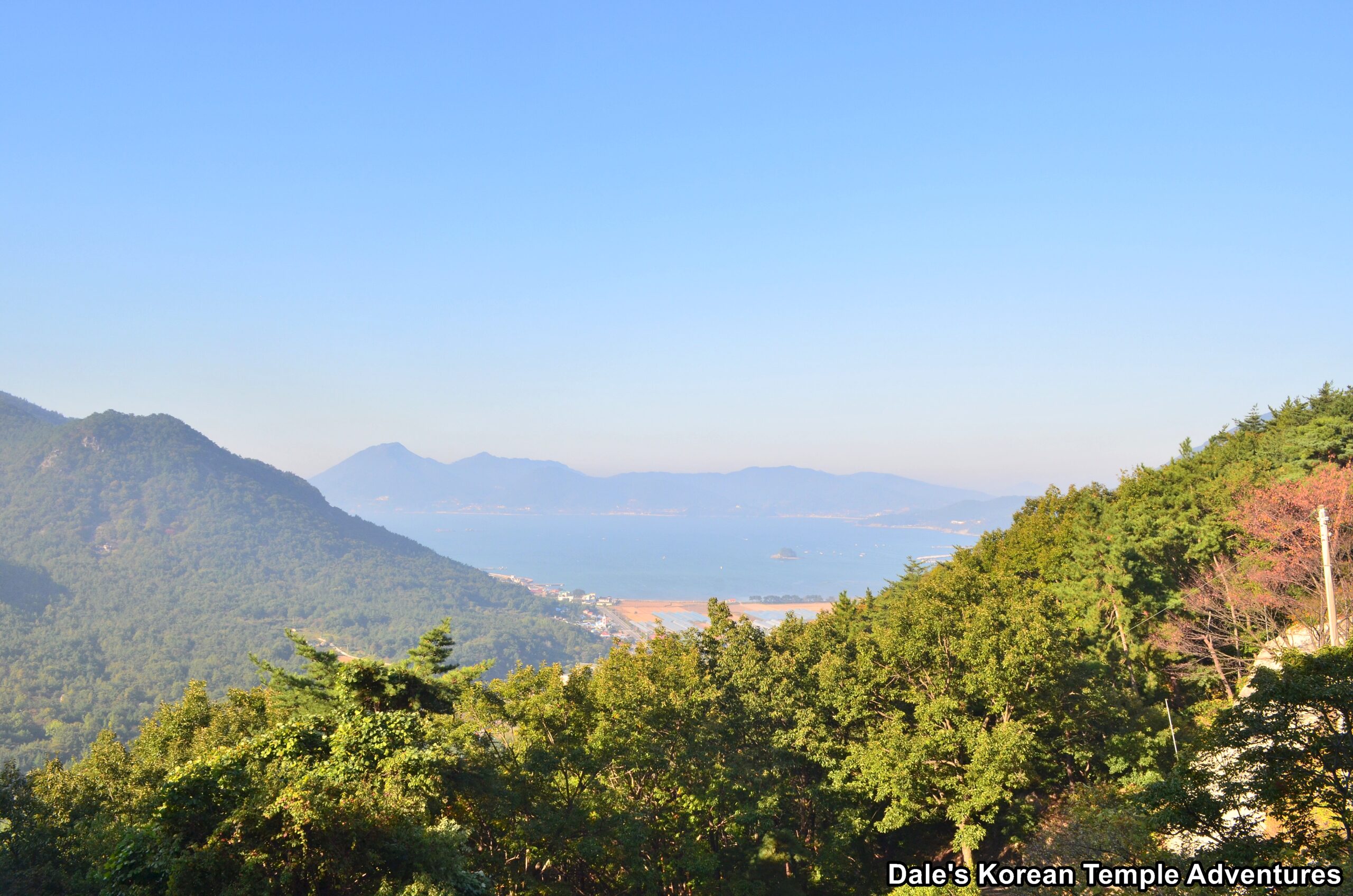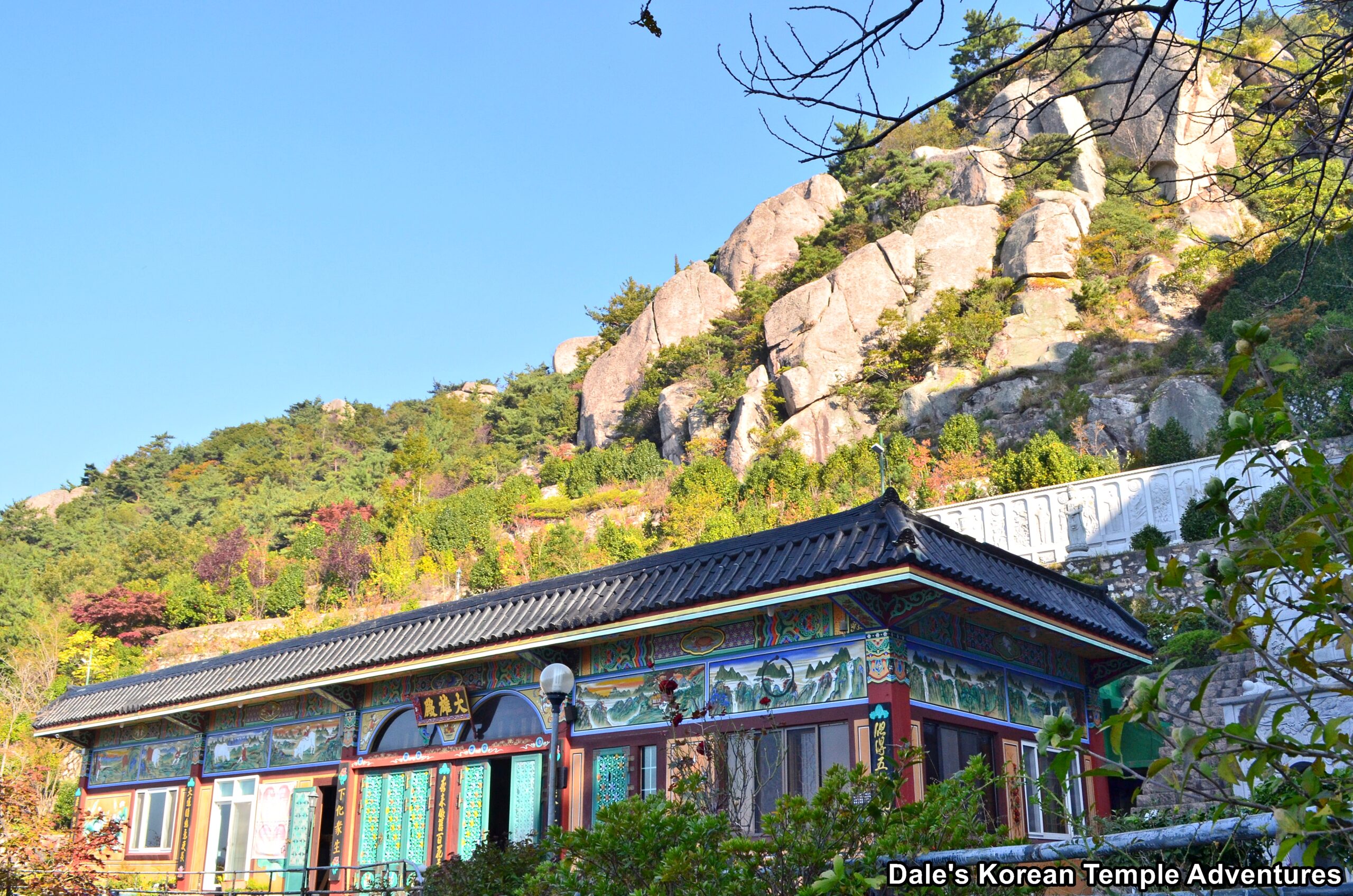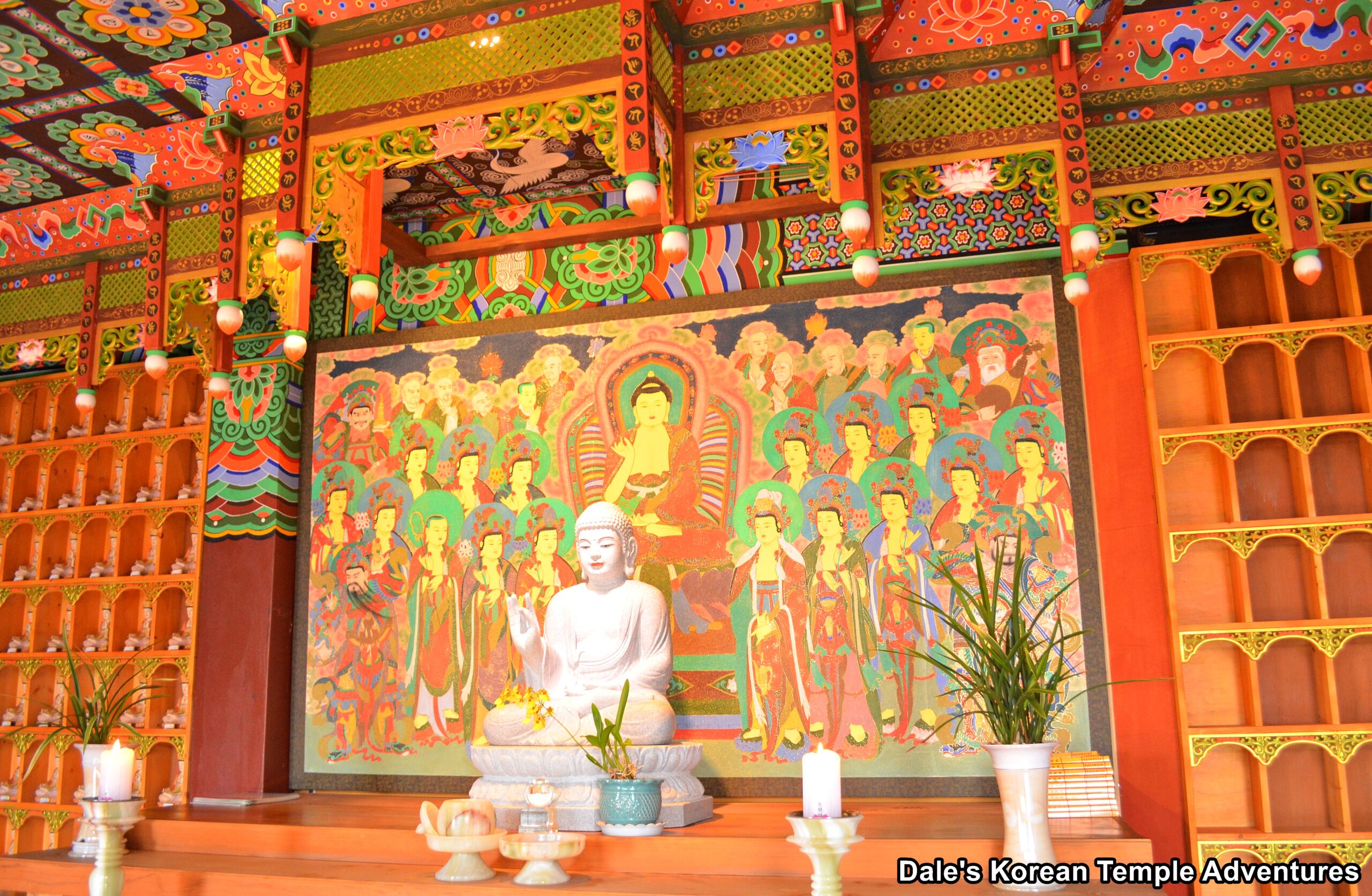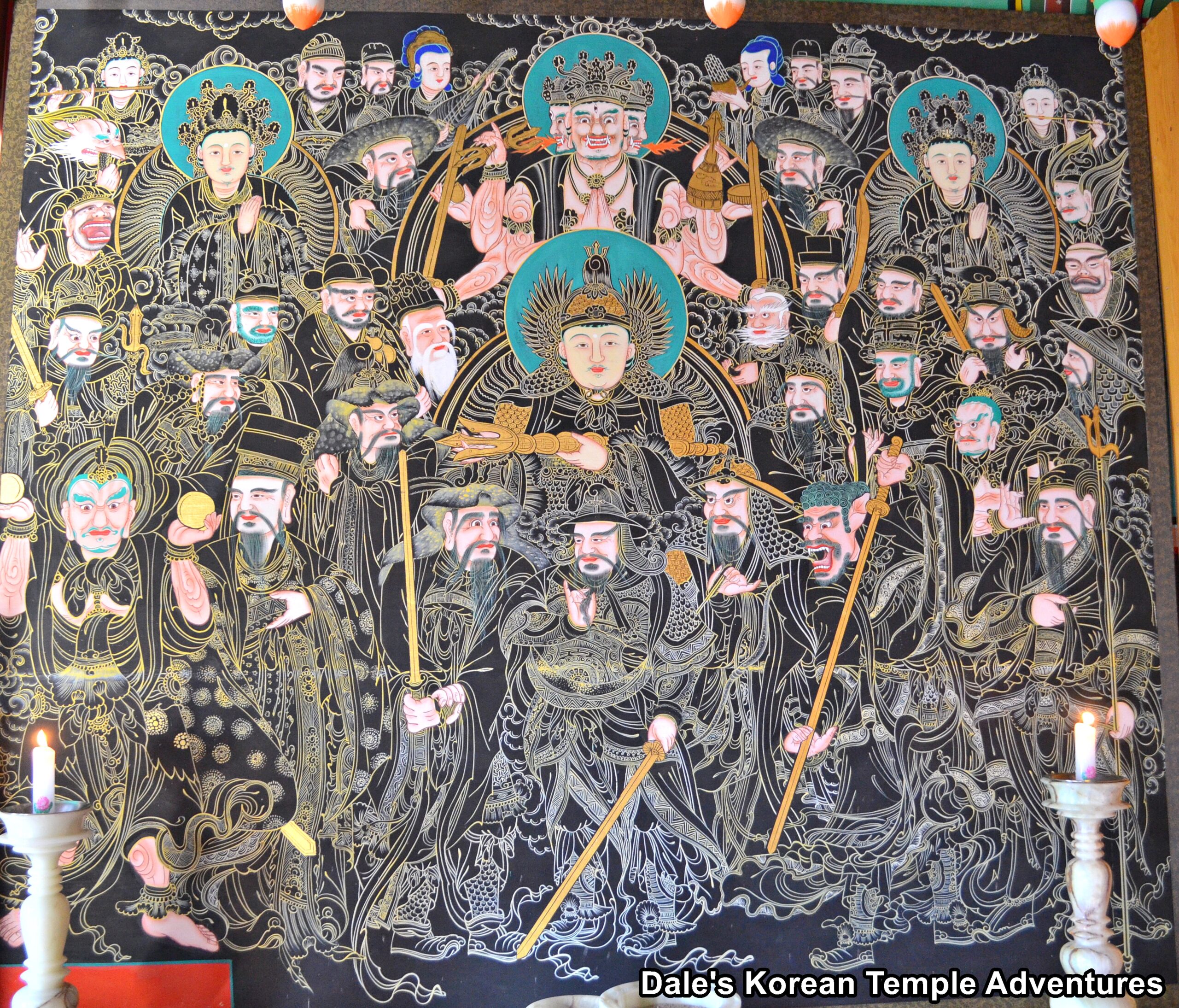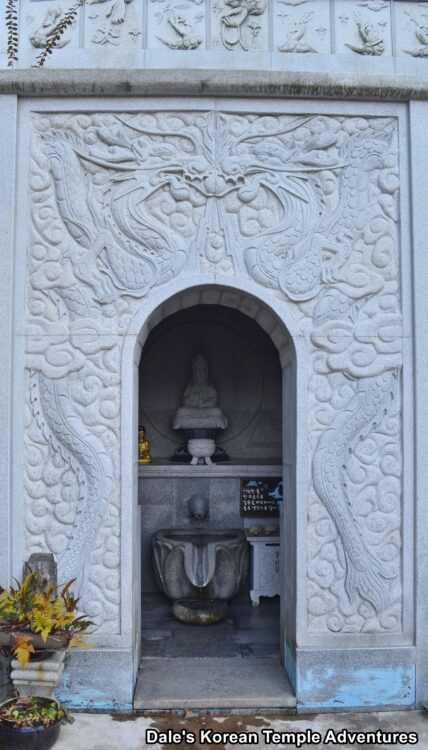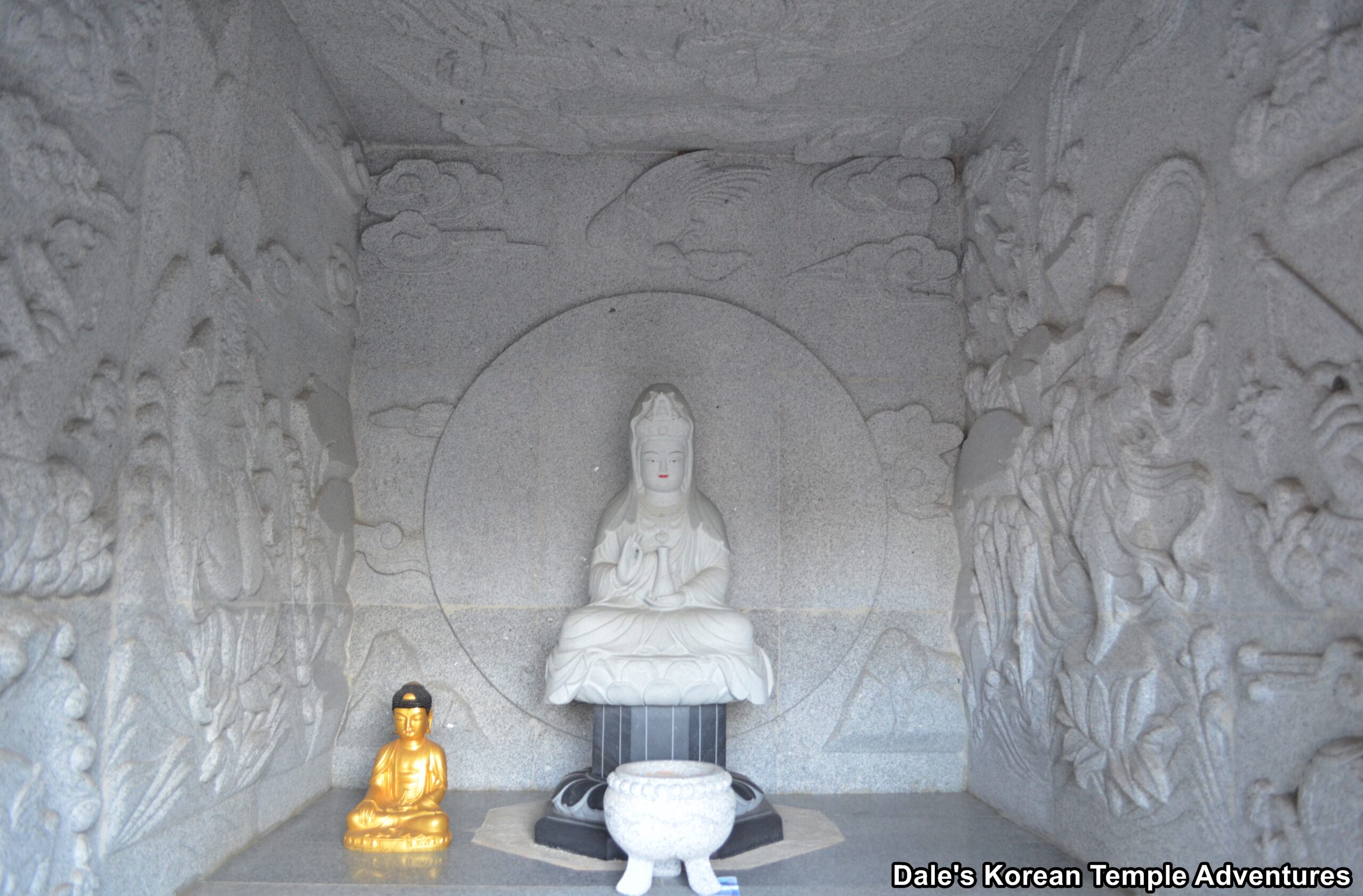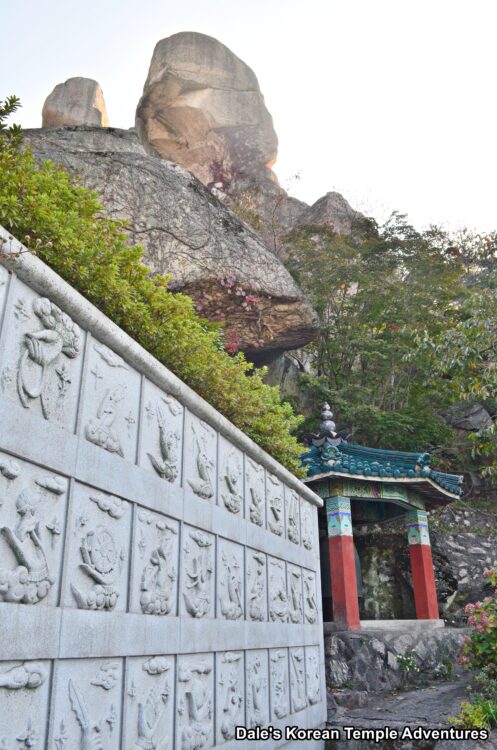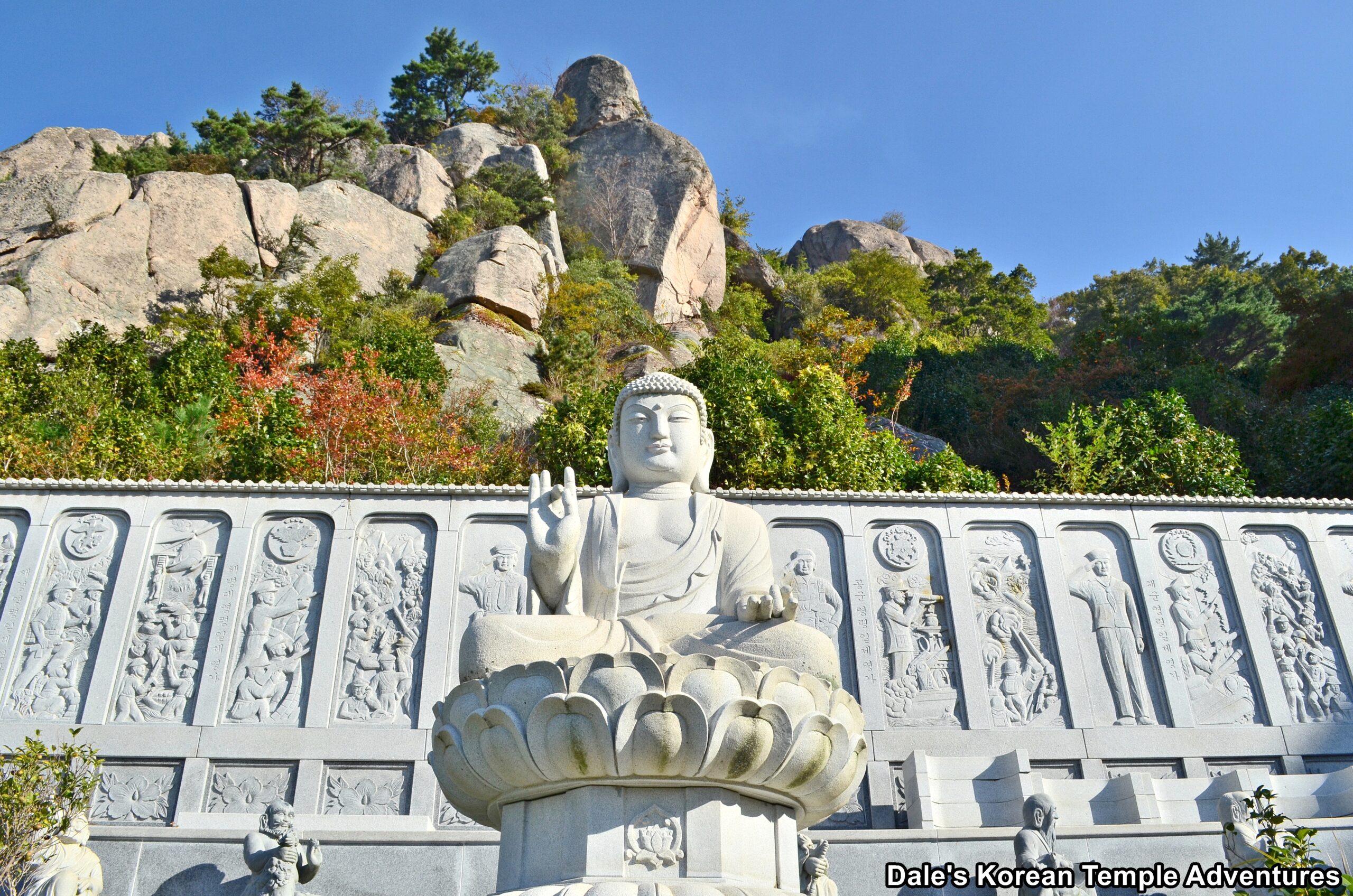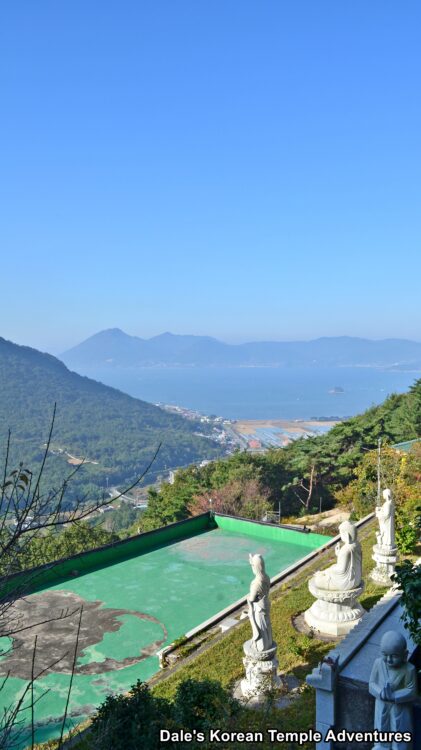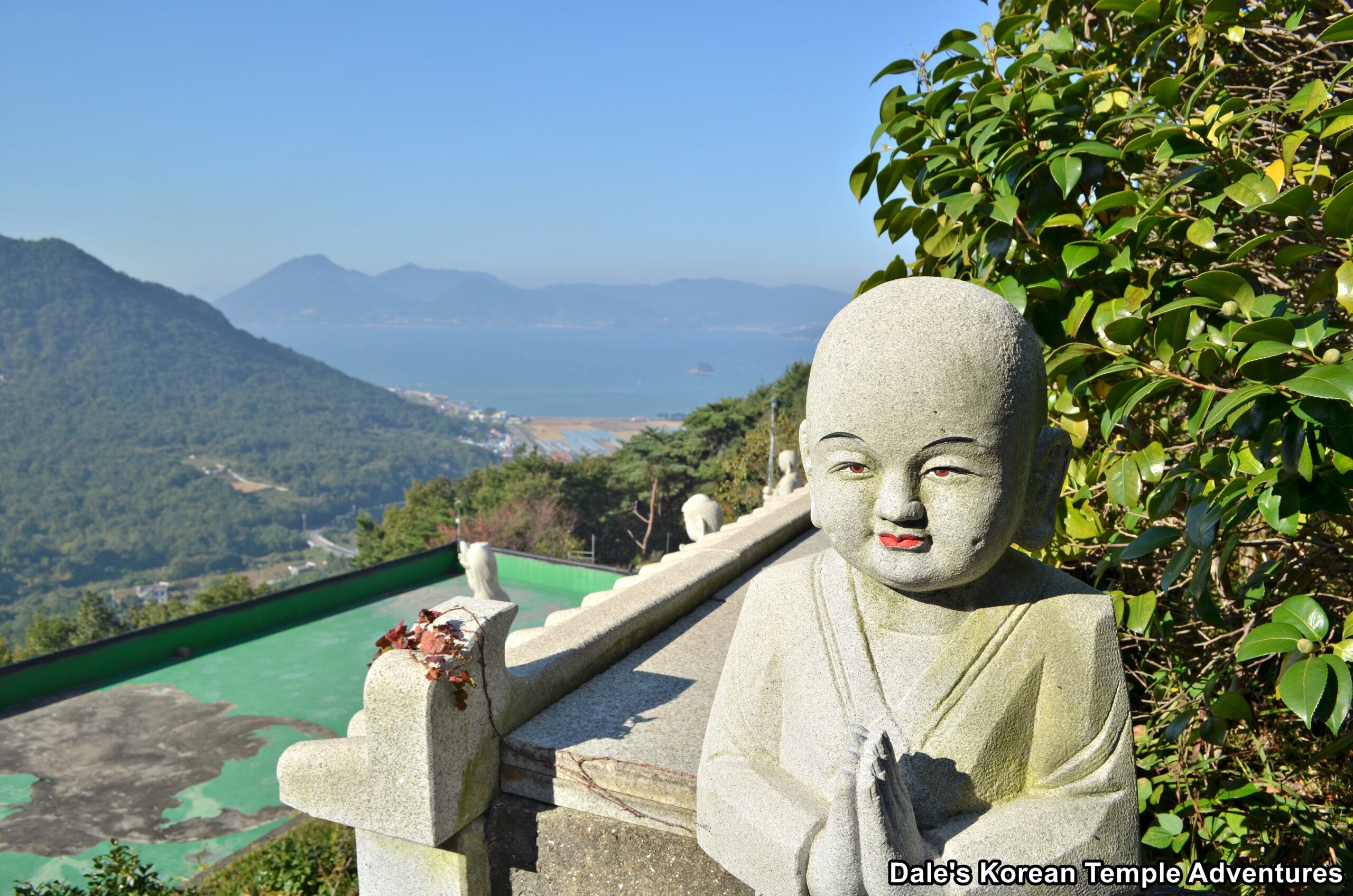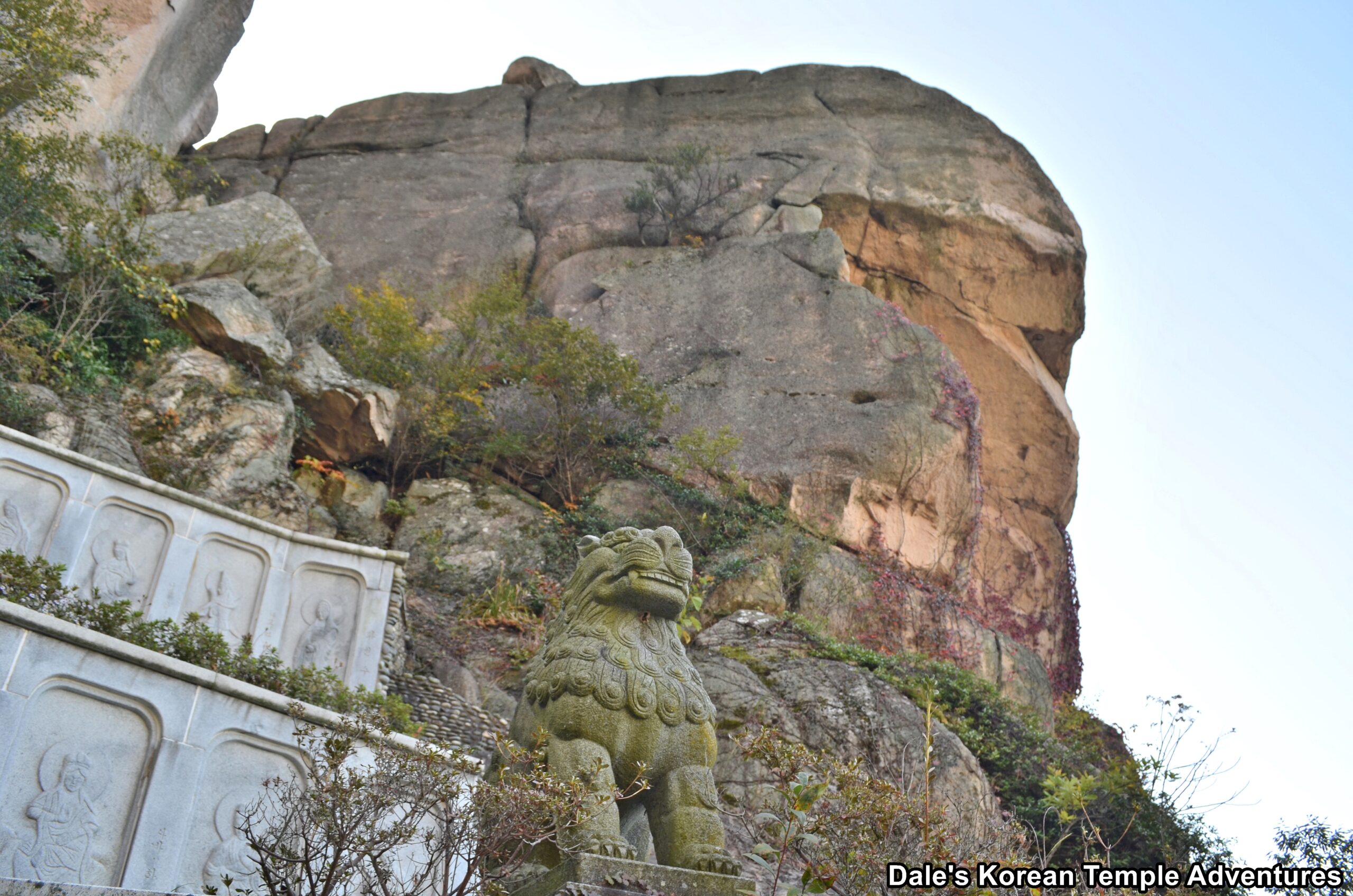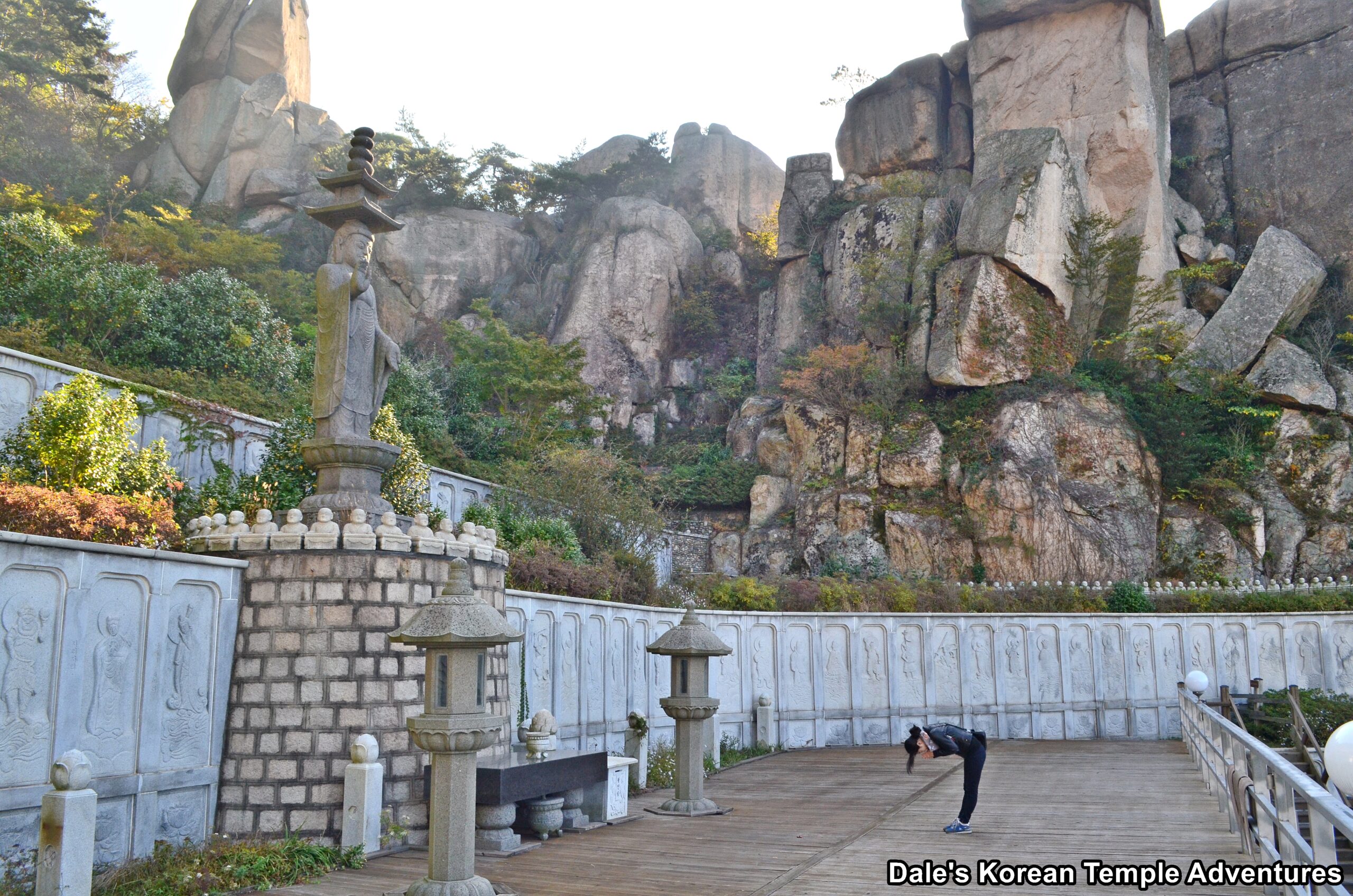Geumwangsa Temple – 금왕사 (Namhae, Gyeongsangnam-do)
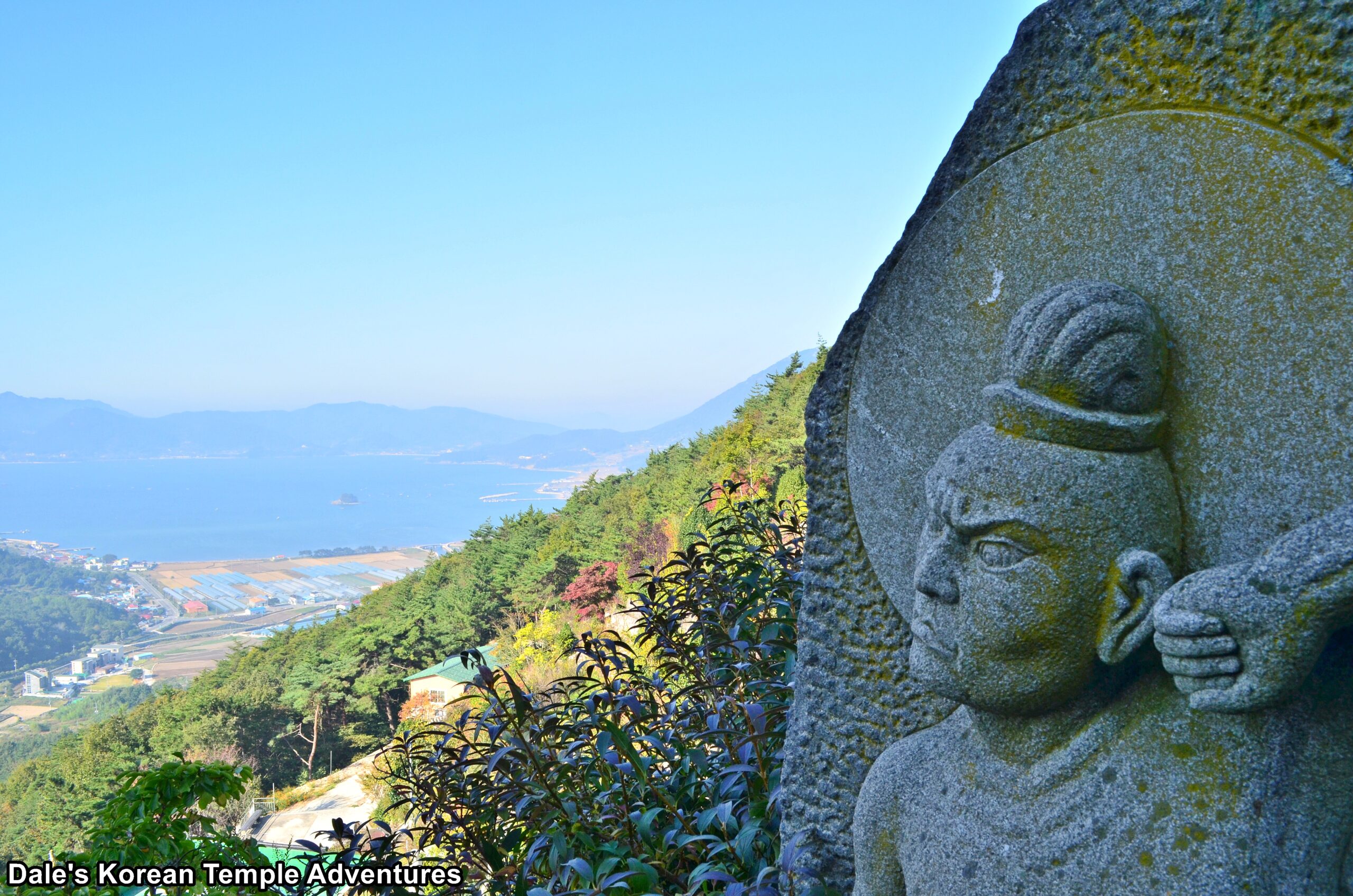
Temple Layout
Geumwangsa Temple is a modern temple with not much of a history in Namhae, Gyeongsangnam-do. Geumwangsa Temple is located to the north of Mt. Geumsan (704.9 m) at the entry of the valley that leads up to Boriam Herimtage. The temple also enjoys a beautiful view of the sea off in the distance to the west. And the ascent towards the temple grounds is rather steep; but when you finally do arrive, you’ll be welcomed by the fan-like folds of the mountain where Geumwangsa Temple is precariously placed.
After climbing a steep set of stairs, you’ll be looking towards the modern Daeung-jeon Hall, which also acts as the visitors’ centre, as well. The exterior walls of the Daeung-jeon Hall are adorned with Shimu-do (The Ox-Herding Murals), as well as floral murals. Stepping inside the main hall, rather oddly, you’ll find an image of Amita-bul (The Buddha of the Western Paradise) on the main altar instead of Seokgamoni-bul (The Historical Buddha), who traditionally occupies the main altar inside a Daeung-jeon Hall. And hanging on the far left wall, you’ll notice a large black Shinjung Taenghwa (Guardian Mural).
Just before you start your climb up another set of stairs, which Geumwangsa Temple has a lot of, you’ll notice an artificial cave to your right. Housed inside this cave is a solitary image of Gwanseeum-bosal (The Bodhisattva of Compassion). The opening of this stone cave is adorned with a pair of low-relief images of dragons. And the interior is filled with a collection of low-relief images of Botarakgasan, or Mt. Potalaka, which is the mythical dwelling of Gwanseeum-bosal. And to the right of this shrine dedicated to the Bodhisattva of Compassion is a diminutive Jong-ru Pavilion.
Up the set of stairs to the right of the Gwaneum-jeon Hall, you’ll climb to a plateau where a triad of statues is situated. This triad overlooks the harbor down below. This triad is comprised of Amita-bul in the centre, who is joined on either side by Gwanseeum-bosal and Jijang-bosal (The Bodhisattva of the Afterlife). To the right of this triad of statues is a natural cave that also acts as the Yongwang-dang Hall at Geumwangsa Temple. Just outside the low-lying cave entryway is a fierce statue dedicated to Yongwang (The Dragon King). As for inside this cave shrine hall, and resting inside a glass display case, while also resting in a pool of mountain water, is yet another shaman image dedicated to Yongwang.
As you climb yet another flight of stairs, you’ll pass by numerous Nahan (The Historical Disciples of the Buddha) that rest in and among the mountain crags and crevices. Like you, they’re enjoying the view of the mountains and harbor off in the distance. The Nahan are joined by a playful collection of dongja (attendants), as well. And once you finally do summit the stairs, you’ll be welcomed by a solitary statue standing in the clearing. This statue is dedicated to Mireuk-bul (The Future Buddha). All around you, you’ll now notice all the irregular rock formations that make up the mountain peak of Geumwangsa Temple.
If you’re lucky, and to the left of the Mireuk-bul statue, the gate for the Sanshin-gak Hall, which is perched at the highest point on the temple grounds, will be open. However, the Sanshin-gak Hall also act as the head monk’s meditative retreat, so it might not always be open like when I visited. But if you’re lucky enjoy to enjoy the Sanshin-gak Hall, make sure you bring a good pair of hiking shoes because the zig-zagging path that leads up to this shaman shrine hall is a bit treacherous in parts.
How To Get There
The easiest way to get to Geumwangsa Temple is to simply take a taxi from the Namhae Intercity Bus Terminal. The taxi ride from the bus terminal to Geumwangsa Temple should take about 35 minutes, and it’ll cost you 30,000 won (one way).
Overall Rating: 7/10
Geumwangsa Temple is one of the most beautifully located temples in all of Korea. With its beautiful scenic seaside view, as well as the beautiful rocks that crown the mountain peaks, you’ll have more than enough reason to visit this little known temple. Adding to its natural beauty, you’ll find beautiful statues spread throughout the temple grounds; and if you have the time, make sure you visit the neighbouring Boriam Hermitage. You won’t regret visiting either.
